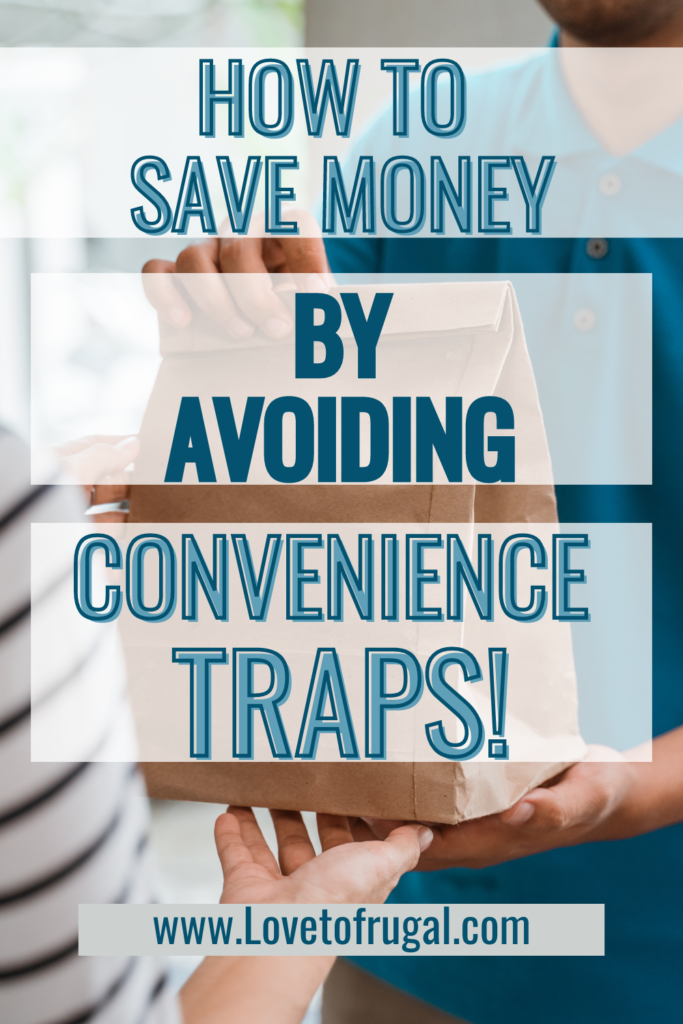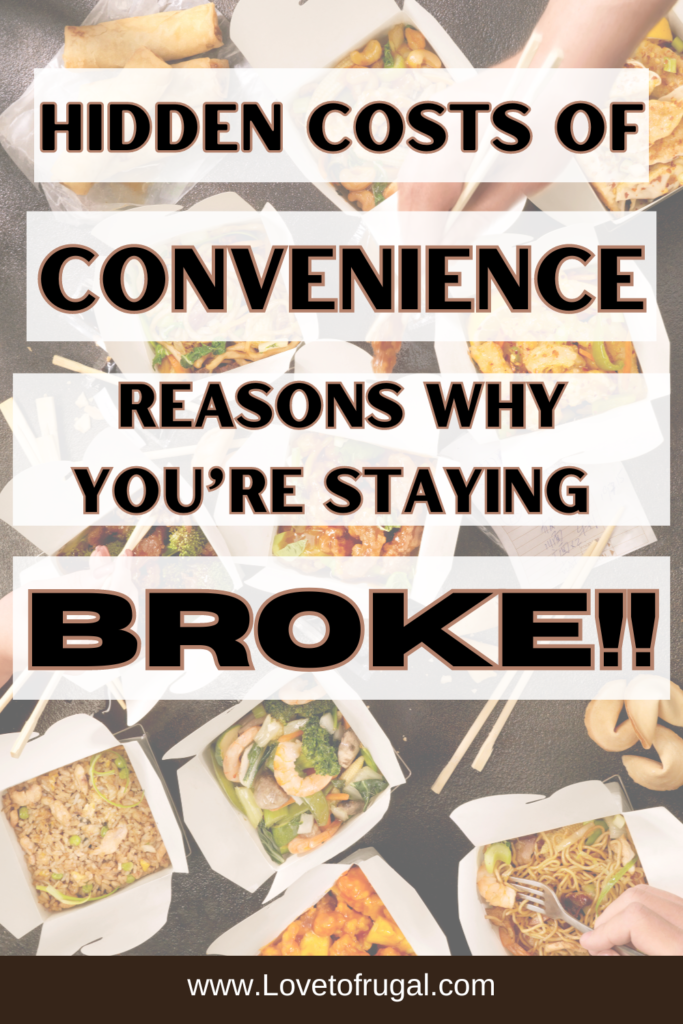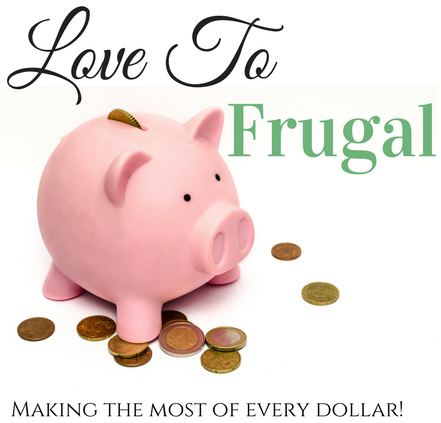Hidden Costs Of Convenience: How It’s Draining Your Finances
In today’s fast-paced world, the hidden costs of convenience are something many of us overlook, because it’s become a way of life for many. Whether it’s grabbing a quick meal on the go, hailing a ride with the tap of a button, or signing up for another subscription service to save time, we’re surrounded by choices that promise to make our lives easier. But here’s the thing: while these conveniences might save us a few minutes here and there, they often come with a hefty price tag that’s quietly draining our finances.
Personally, I believe that living a fulfilling life doesn’t have to mean spending more money—quite the opposite, in fact! It’s about finding smart ways to make your dollars stretch further without sacrificing the things that truly matter. That’s why it’s so important to take a closer look at the hidden costs of convenience, and how these seemingly small expenses can add up to big financial stress over time.
In this post, let’s look at the psychology behind why we’re so drawn to convenience, explore some of the most common ways it’s costing us, and, of course, I’ll share practical tips on how to break free from the convenience trap without feeling deprived. Because at the end of the day, the best things in life aren’t the ones that come with a recurring monthly fee—they’re the ones we invest in with a little bit of time, effort, and intentionality. So, let’s take a journey together to uncover the true cost of convenience and find out how you can reclaim control over your spending.
*This post may contain affiliate links, which means that if you buy a suggested product, I will earn a small commission, at no extra cost to you. For more information, see my disclosure page.
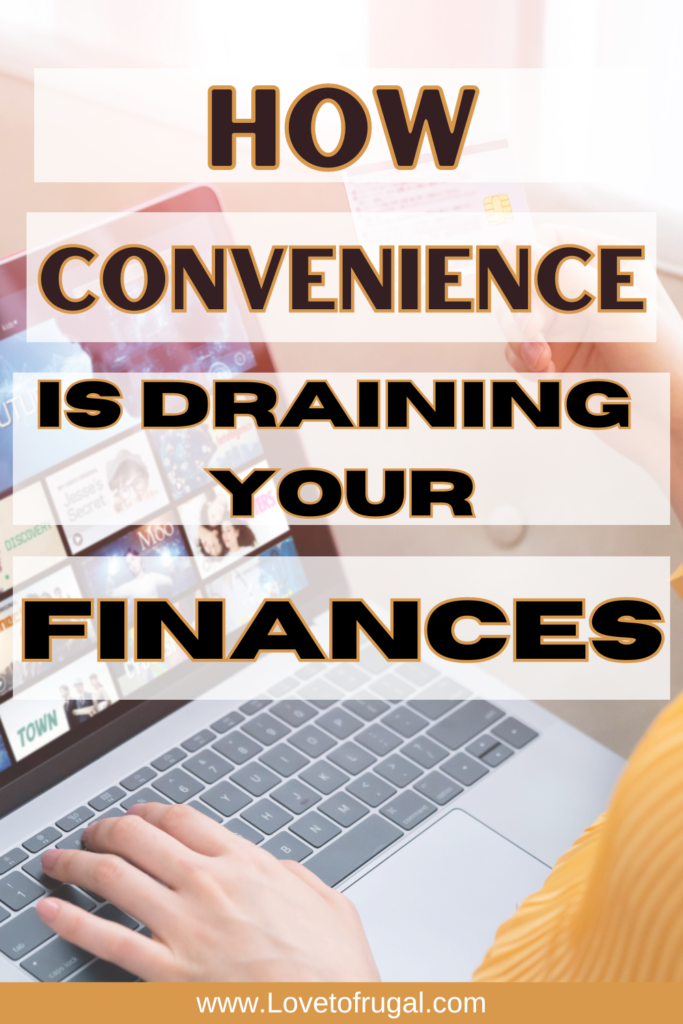
The Hidden Costs of Convenience: A Double-Edged Sword
The convenience economy is booming, with companies like Amazon, Uber, and DoorDash catering to our desire for quick solutions. While these services save time and effort, they also encourage impulsive spending and lead to significant hidden costs. Here are some key areas where the hidden costs of convenience are impacting your wallet:
Food Delivery Services
Food delivery apps exemplify the hidden costs of convenience. Although it’s tempting to order your favorite meal with just a few taps, consider the following:
- Delivery Fees and Tips: These extra charges can add up significantly over time.
- Inflated Menu Prices: Restaurants often raise prices on delivery platforms to cover service fees.
- Frequent Ordering: The ease of ordering can lead to more frequent purchases compared to cooking at home.
Example: Instead of spending $20 on a delivery meal, preparing a similar dish at home could cost $5, saving you $15 per meal. Over a month, replacing 10 delivery meals with homemade ones saves $150.
Long-term Sacrifice: Frequent spending on food delivery can deplete savings that could be invested in significant goals, such as buying a home or saving for retirement.
Solution: Plan your meals ahead and prepare them at home. Batch cooking and meal prepping can help you save both time and money.
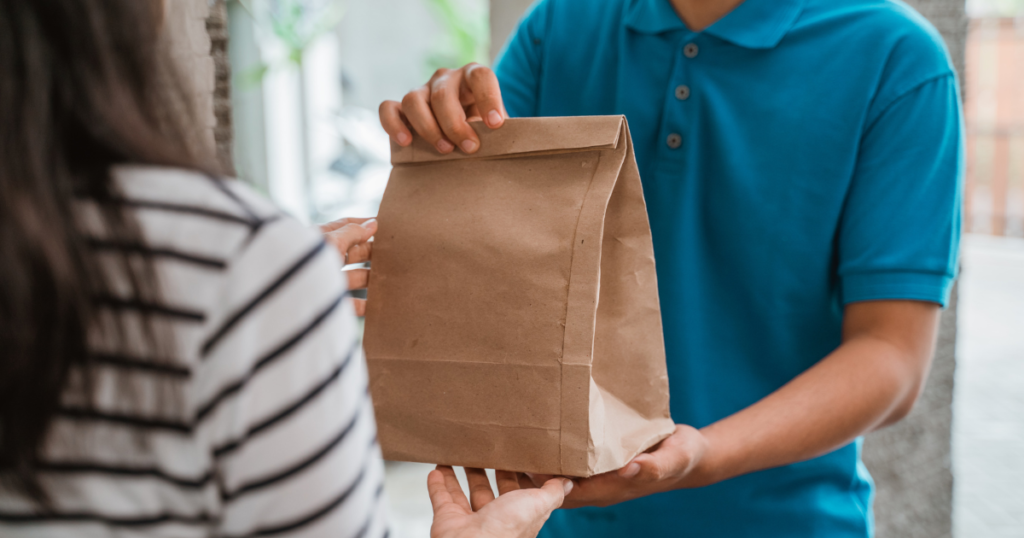
2. Subscription Services
Subscription services, from streaming platforms to monthly boxes, also come with hidden costs. Here’s how:
- Auto-Renewals: It’s easy to forget about subscriptions you rarely use, leading to wasted money.
- Bundling: Bundled packages may lead you to pay for more than you actually use.
Example: Canceling a $30 gym membership you rarely use saves $360 annually. Similarly, canceling unused streaming services can save an additional $240 per year.
Long-term Sacrifice: Money spent on unused subscriptions could have been used for emergency funds, paying off debt, or educational investments.
Solution: Regularly review your subscriptions and cancel those you don’t use. Opt for pay-as-you-go services instead of monthly fees.
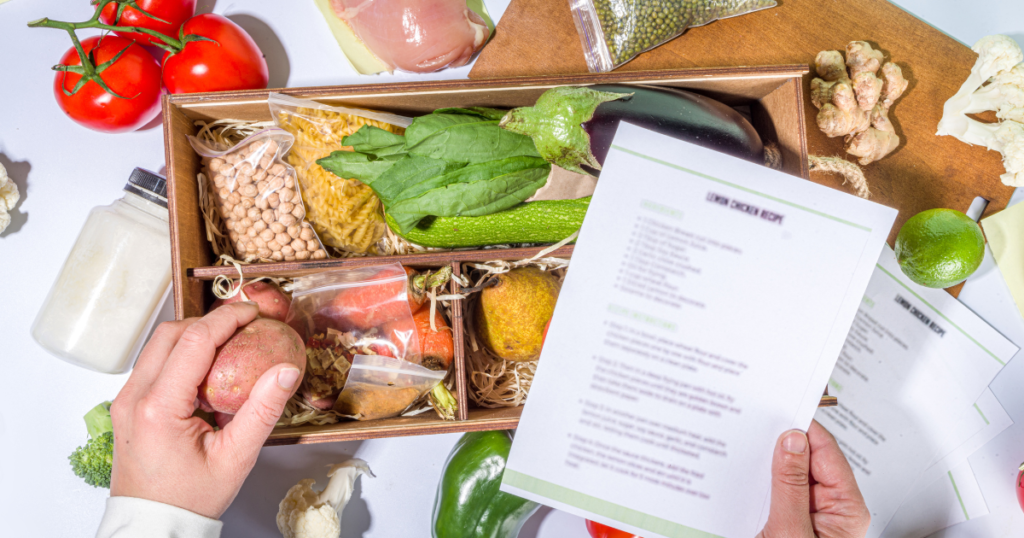
3. Ride-Sharing Apps
Ride-sharing apps like Uber and Lyft offer convenience but come with hidden costs:
- Surge Pricing: Prices can spike during peak times or adverse weather.
- Frequent Use: Regularly using ride-sharing services instead of cheaper alternatives can be costly.
Example: Spending $15 on ride-sharing three times a week adds up to $180 monthly. Switching to a $70 monthly public transport pass saves $110 per month, or $1,320 annually.
Long-term Sacrifice: Regular use of ride-sharing can delay savings for significant expenses like buying a car or investing in a home.
Solution: Use ride-sharing services sparingly and consider public transportation, biking, or walking.
4. Pre-Packaged and Processed Foods
Pre-packaged and processed foods are another example of the hidden costs of convenience:
- Higher Price Per Unit: Pre-packaged foods often cost more than fresh ingredients.
- Health Costs: Processed foods are less healthy and can lead to higher healthcare costs.
Example: A pre-packaged salad costing $7 can be replaced by homemade salads at $2 per serving, saving $25 a week, or $100 a month.
Long-term Sacrifice: Spending on pre-packaged foods can lead to higher medical expenses due to poor health, impacting your long-term financial stability.
Solution: Buy fresh ingredients and cook at home. It’s more cost-effective and healthier
5. Automated Bill Payments and Subscriptions
Automated payments can lead to complacency, allowing you to overlook increases in bills or forgotten subscriptions:
- Rate Increases: Automated payments mean you might not notice price hikes.
- Forgotten Subscriptions: Ongoing payments for unused services can add up.
Example: An unnoticed $10 increase in internet service costs an extra $120 annually. Regular checks can help negotiate better rates or switch to cheaper providers.
Long-term Sacrifice: Neglecting to review and optimize recurring payments can result in lost savings, affecting your ability to invest in critical financial goals.
Solution: Regularly review your bills and subscriptions. Set reminders to assess monthly expenditures.
Other Examples Of Conveniences That May Be Keeping You Broke:
- Streaming services
- House cleaning services
- Lawncare services
- Convenience Stores and Gas Station Purchases
- Coffee shops
- Online shopping for non-essentials
- Laundry services
- Pet services
- Fitness and wellness apps

The Psychology of Convenience
The hidden costs of convenience are not just about dollars and cents; they also tap into deeper psychological triggers that drive our spending habits. Understanding these psychological factors can help you recognize why convenience can be so costly and how to counteract its influence.
Instant Gratification
One of the primary psychological drivers behind convenience spending is the pursuit of instant gratification. When we opt for convenience, such as ordering food delivery or using a ride-sharing app, we get immediate rewards—delicious food or a quick ride without any effort. This instant pleasure can be addictive, as it offers a temporary escape from stress or busy schedules, making us more likely to prioritize immediate satisfaction over long-term financial health.
Cognitive Overload
In our fast-paced lives, cognitive overload can lead to decision fatigue. With countless tasks and decisions to manage, the simplest option often seems the best choice. Convenience services offer a quick fix, reducing the mental effort required to make decisions about meals, transportation, or chores. However, this ease of use can come at a steep price, as the costs of these services accumulate over time. Cognitive overload makes us more prone to opting for convenience without fully considering its financial impact.
Perceived Value
Convenience can also be justified through the lens of perceived value. We often view convenience as a premium service that’s worth the extra cost because it saves us time and effort. This perception can skew our spending habits, making us more willing to pay higher prices for the sake of ease. For example, paying extra for a meal delivery service might be seen as a worthwhile investment in time saved, even though cooking at home could be significantly cheaper.
Social and Cultural Influences
Social and cultural factors further reinforce the appeal of convenience. In a culture that celebrates hustle and productivity, convenience services are marketed as tools for achieving more with less effort. Social media and advertising often glorify the ease and luxury of these services, subtly influencing us to accept higher costs as a norm. This cultural shift can normalize spending on convenience, making it harder to recognize the long-term financial implications.
Emotional Spending
Emotional spending is another psychological factor that contributes to the hidden costs of convenience. Therefore, many people use convenience services as a form of emotional comfort or reward, especially during stressful times. This emotional spending can lead to impulsive purchases and a tendency to overlook the financial consequences in favor of immediate relief or pleasure.
Understanding these psychological influences can help you become more mindful of your spending habits and make more deliberate financial decisions. By recognizing the factors driving your choices, you can take proactive steps to manage the hidden costs of convenience and prioritize your long-term financial well-being.
Practical Steps to Combat Convenience Spending
1. Budgeting and Tracking Expenses
Create a budget that includes a category for convenience spending. Then, track your expenses to identify patterns and areas to cut back.
Example: Use budgeting apps like Nerdwallet or YNAB (or do it the old fashion way with a paper and pen) to track and categorize spending. Seeing $200 spent on takeout last month might motivate you to cook more at home.
Long-term Benefit: A well-maintained budget helps with achieving long-term financial goals, such as building an emergency fund or saving for a down payment on a house.
2. Setting Financial Goals
Clear financial goals can help you resist the temptation of convenience spending. So, whether saving for a vacation, a home, or retirement, having a goal makes it easier to avoid unnecessary expenses.
Example: If you aim to save $5,000 for a vacation, cutting $200 of convenience spending per month helps you reach this goal in just over two years.
Long-term Benefit: Financial goals provide direction and purpose for your savings, leading to significant milestones and improved financial stability.
3. Mindful Spending
Practice mindful spending by pausing before making a purchase and evaluate if the convenience is worth the extra cost and if there are cheaper alternatives.
Example: Before ordering a $25 meal delivery, consider if you can prepare a similar meal at home.
Long-term Benefit: Mindful spending leads to better financial decision-making, thereby reducing debt, and increasing savings over time.
4. DIY Solutions
Embrace do-it-yourself (DIY) solutions where possible. Cooking at home, cleaning your own space, or handling simple repairs can save significant amounts of money.
Example: Instead of $100 a month for a house cleaner, clean your home yourself and save $1,200 annually.
Long-term Benefit: DIY solutions not only save money but also build skills and self-reliance that help contribute to long-term financial independence.
In the end…
The hidden costs of convenience can sneak up on us, slowly draining our finances without us even realizing it. But here’s the good news: with a little bit of awareness and a few small changes, you can take back control and start living more intentionally. It’s not about giving up everything that makes life easier—it’s about making thoughtful choices that align with your financial goals and values.
I truly believe that a fulfilling life doesn’t have to be expensive. By being mindful of where your money goes and recognizing the true cost of convenience, you can create a lifestyle that’s not only more affordable but also more rewarding. So, the next time you’re tempted by a quick fix or an easy option, remember that the best things in life are often the ones that take a little more time and effort. In the long run, these are the choices that will bring you peace of mind, financial stability, and a deeper sense of satisfaction.
Remember, the money saved by avoiding the hidden costs of convenience can be better invested in your future, helping you achieve financial freedom and security that you want and deserve.
Be sure to subscribe to Love To Frugal so you never miss a post and make sure to follow me on Pinterest, Instagram & Facebook for even more money saving, frugal living tips!
OTHER POSTS YOU MAY BE INTERESTED IN:
Reverse Meal Planning: Easy Solutions To Save Time And Money
Proven Strategies For Saving More Money On Monthly Bills
Things I Stopped Buying To Save Money And Build Wealth
